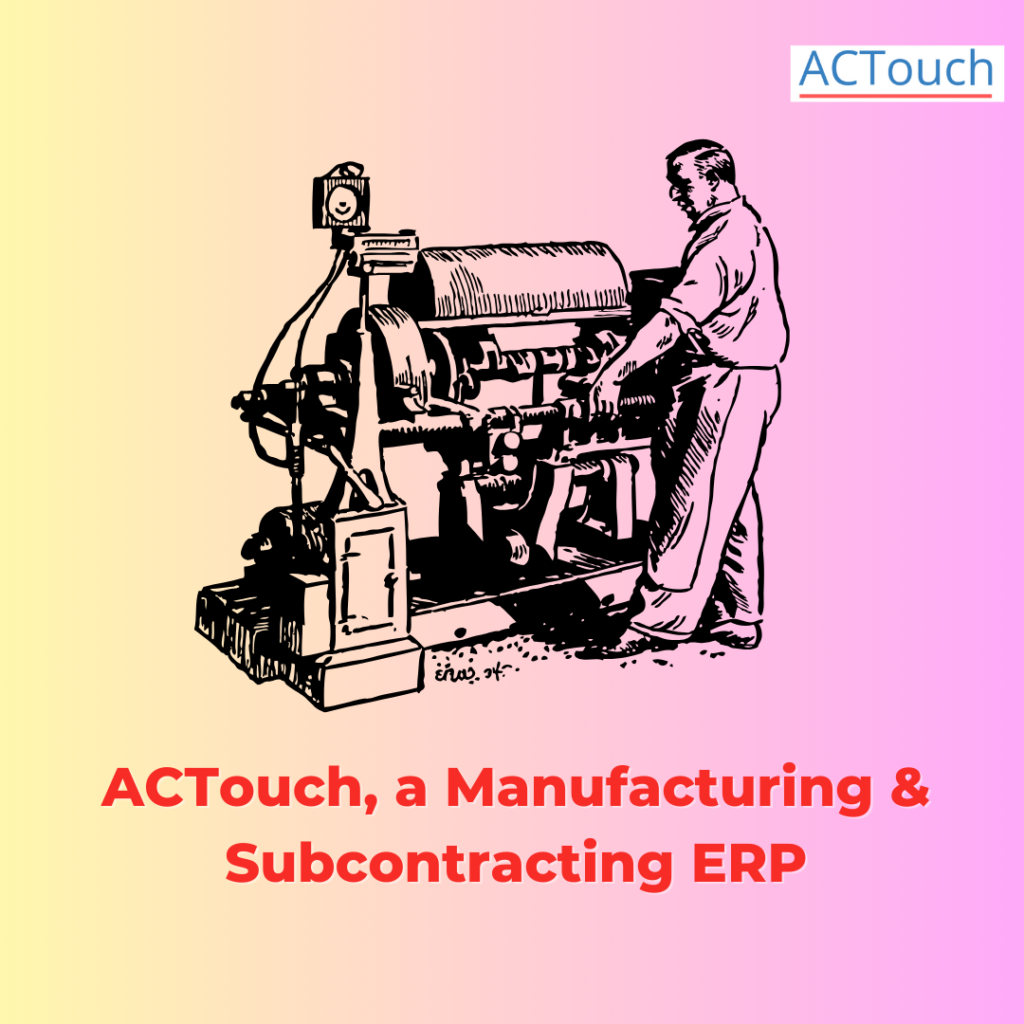Calculate Fixed and Variable Costs in ERP
Understanding and effectively managing fixed and variable costs are crucial for sustained Business success. Fixed costs remain constant regardless of production levels, while variable costs fluctuate with changes in output. In this comprehensive guide, we will delve into the significance of fixed and variable costs in the context of ERP (Enterprise Resource Planning) systems. We will explore various aspects of calculating and managing these costs, empowering businesses to make informed financial decisions.

Why to Calculate Fixed and Variable Costs in Manufacturing Business?
In the manufacturing industry, fixed costs (FC) represent expenses that do not vary with production output. These expenses persist even if production halts temporarily, and they include items like rent, insurance, and salaries of management staff. Variable costs (VC), on the other hand, are directly linked to production levels. These costs may include raw materials, labor wages, and utility expenses, which increase or decrease as production fluctuates.
Lets go into details on why we should calculate Fixed and Variable costs and how they are important for our business success.
The break-even point is achieved when fixed expenses and gross margin are equal, resulting in neither gains nor losses. To find your company’s break-even point, divide total fixed costs by the difference between selling price and variable costper unit. So Breakeven analysis with a breakeven formula is important to know what goes in and what comes out.
Lets go into details on why we should calculate Fixed and Variable costs and how they are important for our businesssuccess.
There are many types of costs are considered to arrive at the total costs. Few are like Shipping costs, production costs, Marginal Cost etc. Some factors that could potentially lower production costs include economies of scale through increased production volume and output levels, as well as an increased quantity of output.
It’s a simple assumption that as the production volume increases, the variable components like overhead costs, cost per unit decreases, cost of production, cost of labor, cost per unit will be reduced. So its essential to find the right mix to calculate Fixed and Variable costs for a Finished Goods.
Check Activity Based Costing model to understand more.
However, it’s not a TRUE that as the production increases, the VC needs to be reduced. It depends on reduction in average costs, but will increases wastage, list of expenses, inventory carrying costs etc
How to Calculate Fixed Cost?
Calculating fixed costs is a fundamental step in financial planning and budgeting for any business, especially in the manufacturing industry. Fixed costs are those expenses that remain constant regardless of the level of production or sales. Understanding and accurately calculating fixed costs help businesses determine their breakeven point, set pricing strategies, and make informed decisions about cost-cutting measures.
Here’s a detailed explanation of how to calculate fixed costs:
Identify Fixed Costs
To calculate FC, the first step is to identify all the expenses that do not vary with changes in production output or sales. Some common examples of fixed costs include:
- Rent and Lease Payments: The cost of renting or leasing the manufacturing facility or office space.
- Insurance Premiums: Insurance expenses, such as property insurance or liability insurance.
- Depreciation: The allocation of the cost of tangible assets over their useful life.
- Salaries of Management and Administrative Staff: The fixed salaries paid to managers and administrative employees.
- Property Taxes: Taxes levied on the property owned by the business.
- Utilities: Regular expenses for utilities like electricity, internet, phone lines, etc.
Gather Financial Records
Collect financial records and statements for the relevant period, such as monthly or annually. These records should include all the expenses mentioned above that are considered fixed costs.
Sum Up Fixed Costs
Add up all the fixed costs identified in Step 1 for the chosen period. This sum represents the total fixed costs incurred by the business during that specific timeframe.
Calculate Fixed Cost Formula is as below.
The fixed cost formula is straightforward:
Fixed Cost = Total Expenses – Total Variable Costs
To find the fixed cost, subtract the total variable costs from the total expenses for the period.
Example: Let’s assume a manufacturing company’s total expenses for a month are $50,000, and the total variable costs incurred during the same period amount to $20,000. The calculation for fixed costs will be as follows:
FC = $50,000 – $20,000 = $30,000
In this example, the FC for the manufacturing business is $30,000 for the given month.
It’s essential to keep in mind that FC remain constant in the short term but may change in the long run due to factors such as expansion, downsizing, or changes in business operations. Regularly reassessing fixed costs helps businesses adapt to changing circumstances and make better financial decisions.
Calculating FC is a critical aspect of financial planning for businesses, as it provides valuable insights into cost structures and helps in setting prices to ensure profitability. By understanding fixed costs, businesses can plan their budgets effectively, strategize for growth, and navigate through economic fluctuations. Accurate calculation of fixed costs, when combined with a comprehensive understanding of variable costs and other financial metrics, empowers businesses to make informed decisions that contribute to long-term success.
Explain Total Fixed Cost Formula
Total fixed cost is the sum of all fixed expenses incurred during a specific period. To calculate the total fixed cost, add up all the fixed costs, which may include:
- Rent and Lease Payments
- Insurance Premiums
- Property Taxes
- Administrative Salaries
By understanding your total fixed costs, your manufacturing business can set appropriate pricing strategies and forecast profitability more accurately.
List of All Variable Costs and How to Define Them?
Variable costs are directly related to the production process. Identifying and managing these costs is vital for optimizing operational efficiency. Some common variable costs include:
- Raw Materials: The cost of purchasing raw materials required for production.
- Direct Labor: The wages of workers involved directly in the manufacturing process.
- Utilities: Expenses related to electricity, water, and other utilities used during production.
- Packaging Costs: The cost of materials used for packaging finished goods.
How to Find Total Variable Cost?
Calculating the total variable cost is an essential part of understanding the cost structure of a manufacturing business. Total variable costs are expenses that fluctuate with changes in production levels, directly influenced by the number of units produced or the level of activity. These costs include raw materials, direct labor, and other expenses directly related to the production process. Accurately determining the total variable cost helps businesses make informed decisions about production output, pricing strategies, and overall cost management.
Here’s a detailed explanation of how to find the total variable cost:
Identify Variable Costs
To calculate the total variable cost, start by identifying all the costs that vary with changes in production output. Some common variable costs in the manufacturing industry include:
- Raw Materials: The cost of purchasing materials required for production, such as wood, metal, plastic, etc.
- Direct Labor: Wages and benefits paid to workers directly involved in the manufacturing process.
- Packaging Costs: The cost of materials used for packaging finished goods.
- Direct Overhead: Overhead expenses directly attributed to production, like electricity for machinery.
Determine Variable Cost per Unit:
To find the total variable cost, you need to know the variable cost incurred per unit of production. To calculate the variable cost per unit, divide the total variable costs for a specific period by the total number of units produced during that period.
Variable Cost per Unit = Total Variable Costs ÷ Total Units Produced
For example, if a manufacturing company incurred $8,000 in total variable costs and produced 2,000 units during the same period:
Variable Cost per Unit = $8,000 ÷ 2,000 = $4 per unit
This means that the average variable cost incurred for producing one unit is $4.
Find Total Variable Cost
Once you have calculated the variable cost per unit, you can determine the total variable cost by multiplying the variable cost per unit by the total number of units produced or the level of activity.
Total Variable Cost = Variable Cost per Unit x Total Units Produced
For example, if the manufacturing company produces 1,000 units:
Total Variable Cost = $4 x 1,000 = $4,000
In this example, the total variable cost for producing 1,000 units is $4,000.
Use our Free Fixed Cost Calculator to Save time.
Variable Cost Examples
Let’s illustrate variable costs examples:
Suppose a manufacturing company produces widgets. Each widget requires $5 worth of raw materials, and the direct labor cost for each widget is $3. If the company produces 1,000 widgets, the total variable cost would be:
Total Variable Cost = ($5 + $3) x 1,000 = $8,000
Explain More on Average Fixed Cost Formula and How It Works?
Average fixed Cost Formula helps manufacturers understand the fixed cost per unit of production. It is calculated by dividing the total fixed cost by the number of units produced. The formula for average fixed cost is:
Average Fixed Cost = Total Fixed Cost ÷ Total Units Produced
This metric aids businesses in assessing the impact of fixed costs on individual units, allowing them to make informed decisions about pricing and production levels.
Explain Variable Cost Ratios:
Variable cost ratios express the proportion of variable costs to total costs. The two essential variable cost ratios are:
- Variable Cost Ratio: This ratio indicates the percentage of variable costs in total costs. It is calculated using the formula:
Variable Cost Ratio = (Total Variable Costs ÷ Total Costs) x 100
- Contribution Margin Ratio: This ratio represents the percentage of sales revenue that covers variable costs and contributes to covering fixed costs and generating profit. It is calculated as follows:
Contribution Margin Ratio = [(Total Sales – Total Variable Costs) ÷ Total Sales] x 100
Understanding the significance of calculating fixed and variable costs within the framework of ERP systems is paramount for the success of manufacturing businesses. By accurately assessing these costs, businesses can make informed financial decisions, set competitive prices, optimize operational efficiency, and drive sustainable growth. The insights gained from implementing effective cost analysis and management strategies empower businesses to stay ahead in a dynamic market landscape.
|

